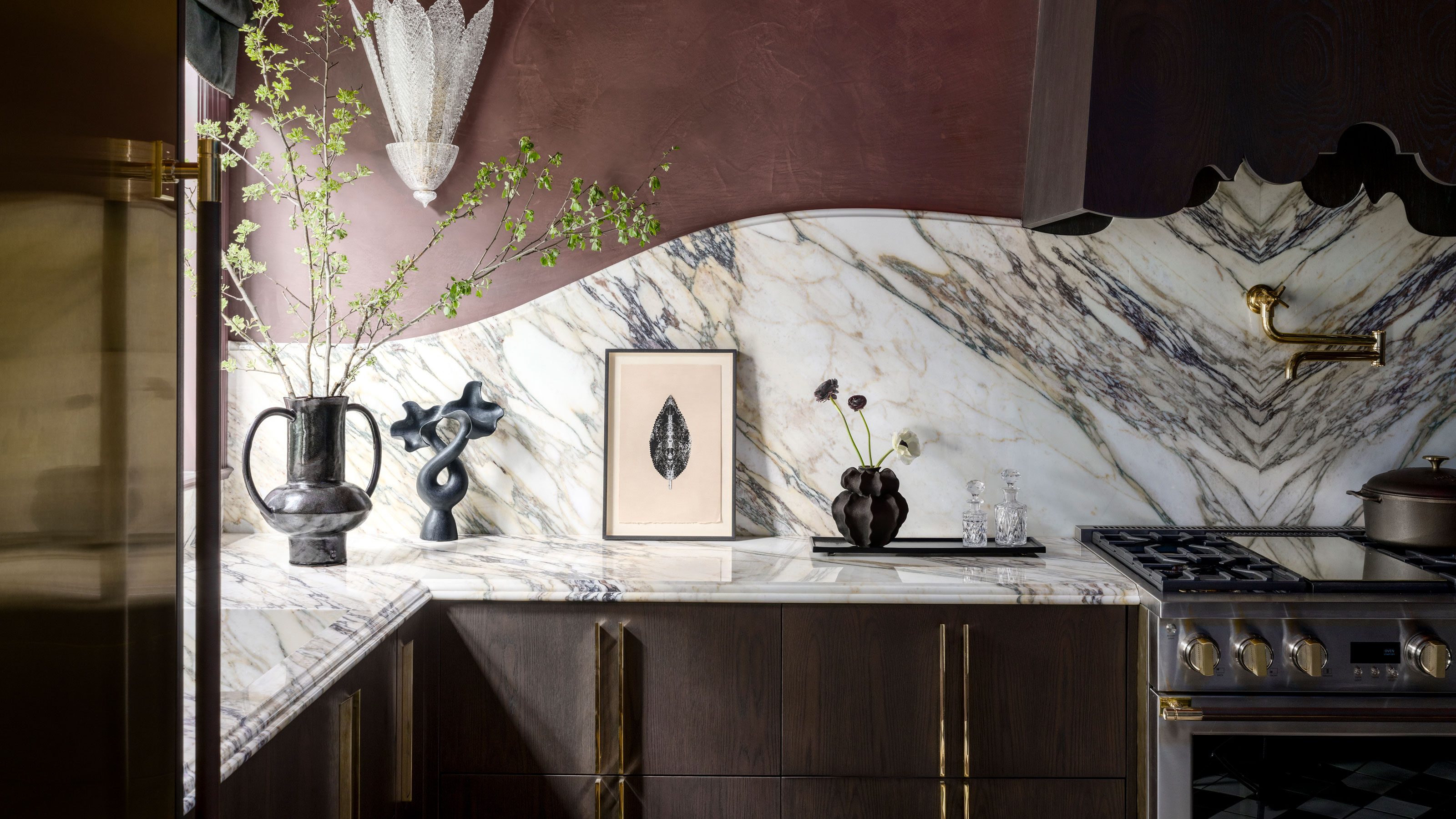
Throughout history, marble has remained perhaps the most consistently revered material. Just as we marvel over a stunning Calacatta slab worktop, ancient civilizations from across the world were equally enthralled by the ethereal qualities of this natural beauty. And while marble has become quite popular, so has bookmatching marble — which helps create unique patterns in the finest form.
While our love and appreciation for the stone is clearly nothing new, the ways in which we use it have changed drastically over time. And for all the beauty there is to be found in the surviving wonders from these fallen civilizations, with our constant obsession with marble kitchens, we have certainly discovered our own ways to celebrate this fabric. Sure, we may not be carving the Venus de Milo, but take one look at these perfectly aligned marble slabs and try to tell me that’s not a sight to be revered in its own right.
Bookmatching marble often creates a crisp, seamlessly lined-up style, and it's the technique designers use to give any bathroom or kitchen the most supremely elegant, luxurious feel. It's often seen on a kitchen backsplash, but also on countertops, and in bathrooms. We’ve asked some of our favorite designers and stone experts to give us a complete guide on the technique and all the dos and don'ts for getting the best look possible.
What Is Bookmatching?
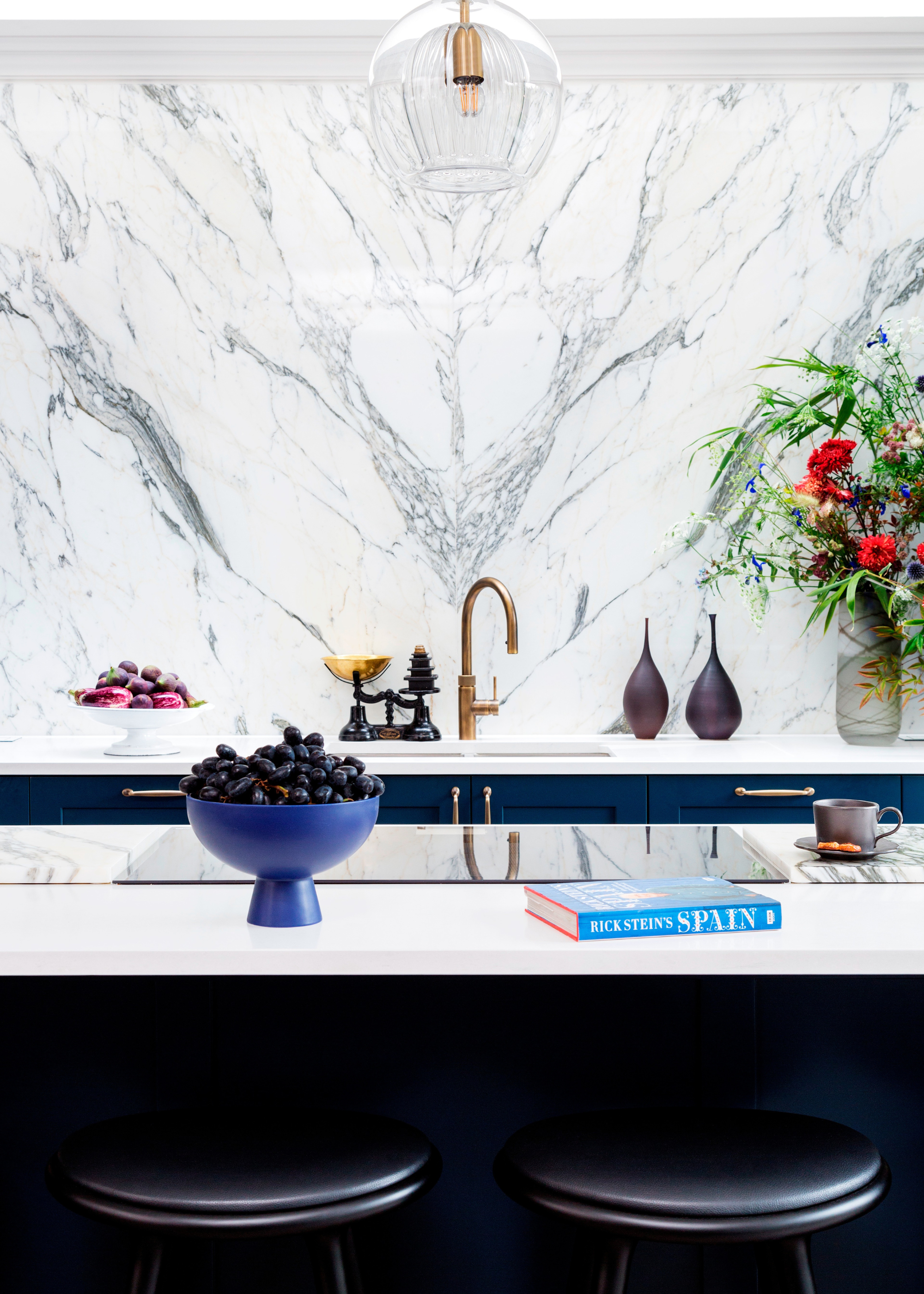
Even if you're well acquainted with all the most fashionable modern kitchen ideas, this technique could teach you a thing or two about how to achieve the most elevated finish. Getting its name from its visual similarity to the symmetry seen in an open book, this technique offers an elegant and modern finish.
"Bookmatching is a technique where two adjoining slabs of marble are cut in a way that creates a mirror image, similar to the pages of an open book," explains Ella Small, director at Mandarin Stone. "This effect is achieved by slicing a marble block into thin slabs and then placing them side by side with their corresponding surfaces facing each other." While this is most commonly done in the way Ella describes, you can also achieve this look using large format tiles, as opposed to multiple slabs of the same marble.
The goal is always creating the illusion of unbroken continuation, which looks particularly effective with a dramatically veined marble surface.
What Materials Can I Use for Bookmatching?
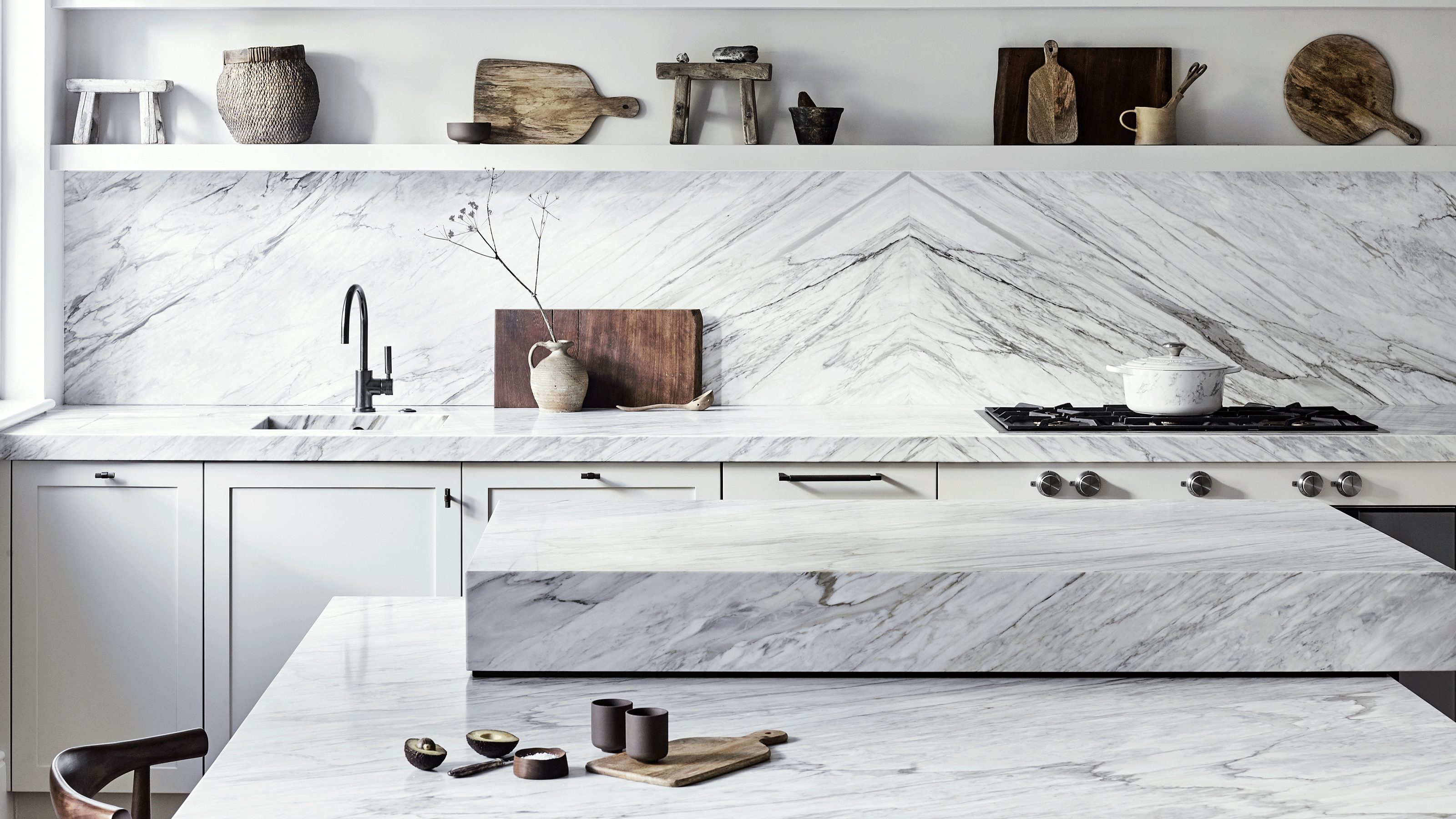
Although marble is by far the most popular stone to use for this technique, that does not mean it is not possible with other materials.
Felix Milns, from HUX London explains: "This aesthetic works particularly well with natural materials such as stone and marble, as it highlights the unique beauty of their natural patterns and markings. It also works well with veneers where thin slices are cut and arranged symmetrically to give the same effect, highlighting the natural grain and patterns of the wood."
Veneer has become an increasingly popular material to use for bookmatching, as the swirling patterns and details can make for an effective design finish, plus, it's a great way to get involved with the decorative veneer trend. "The bookmatching trend is most commonly associated with natural stones. The most popular choice due to its dramatic veining is marble, e.g., Calacatta, Statuario, Arabescato," explains Ella.
However, for all the obvious beauty of these materials, there is a hefty price tag that follows. Luckily, innovations in design have allowed us to achieve the same effect on a tighter budget.
"High-resolution printing technology has allowed porcelain to mimic natural stone whilst also generally being thinner and less heavy for installation. Durable porcelain has become a popular bookmatching choice with no sealing required," Ella says. Porcelain is, therefore, an ideal option for projects on a more moderate budget, plus the less strenuous installation process further lowers the costs.
Where Should I Use This Technique?
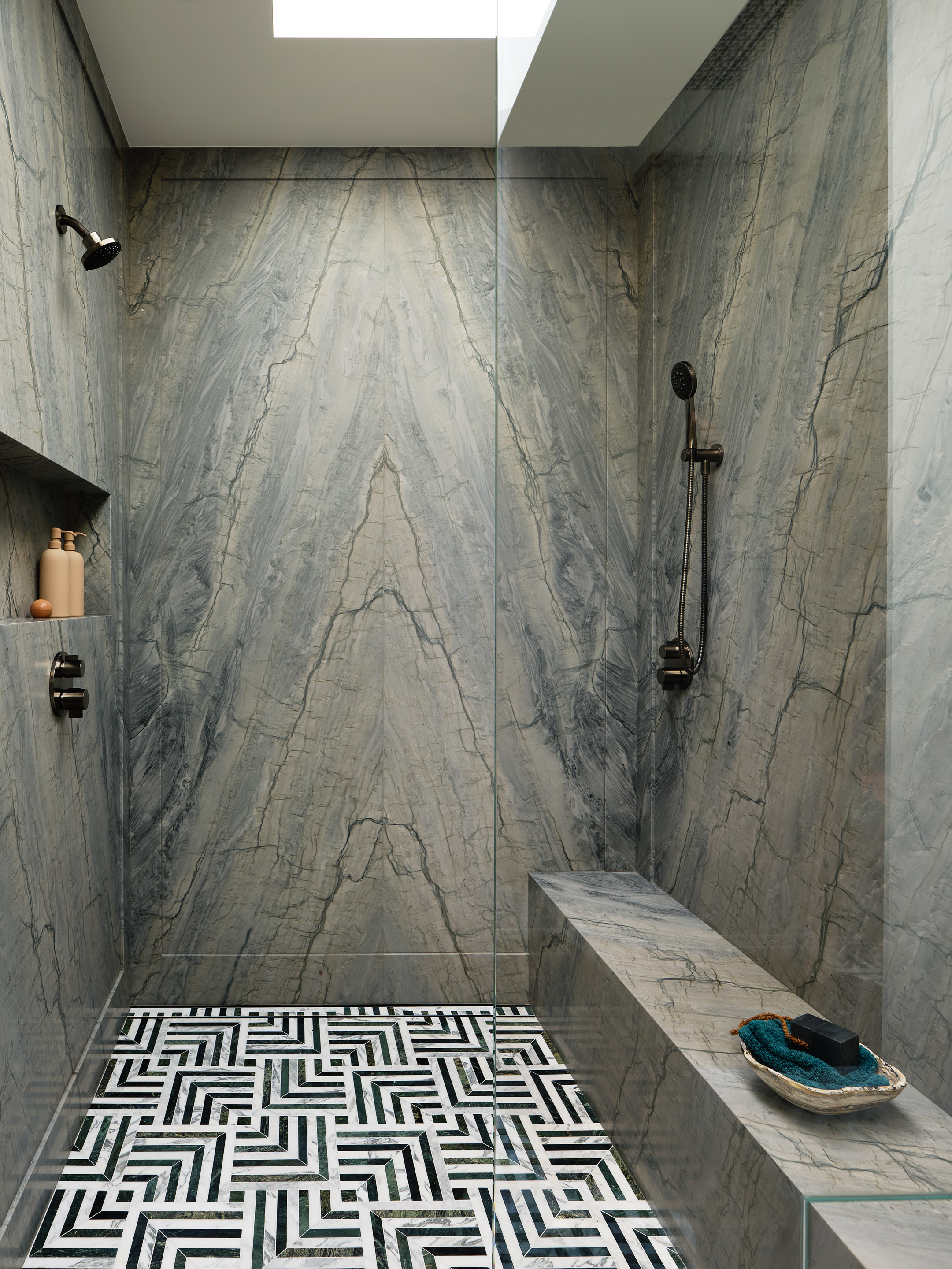
Due to the materials needed, it is most common to see this technique used in bathrooms or kitchens, where you can find larger, uninterrupted spaces to dedicate to a singular material. "The effect can be used in modern kitchens to create a dynamic look," explains Paul Welburn, senior designer at Roundhouse. "It is often used in backsplashes with marble and on islands to create the ‘waterfall’ effect."
This 'waterfall' effect Paul references is the result of the curving, fluid lines found in natural materials like marble. This effect can make a stunning feature in larger, spa bathrooms, where the fluidity of the marble complements the relaxing aura of the space.
Paul also mentions that this style works best when there is a 'longer run' available. As this technique requires multiple slabs of marble, it can easily overwhelm smaller spaces, making a room feel suffocating rather than striking.
As Ella explains, "Generally, you'll need a larger space to allow the slabs to have maximum impact and to ensure that the feature veining does not overwhelm the rest of your interior."
What Style Kitchen Does This Look Suit?
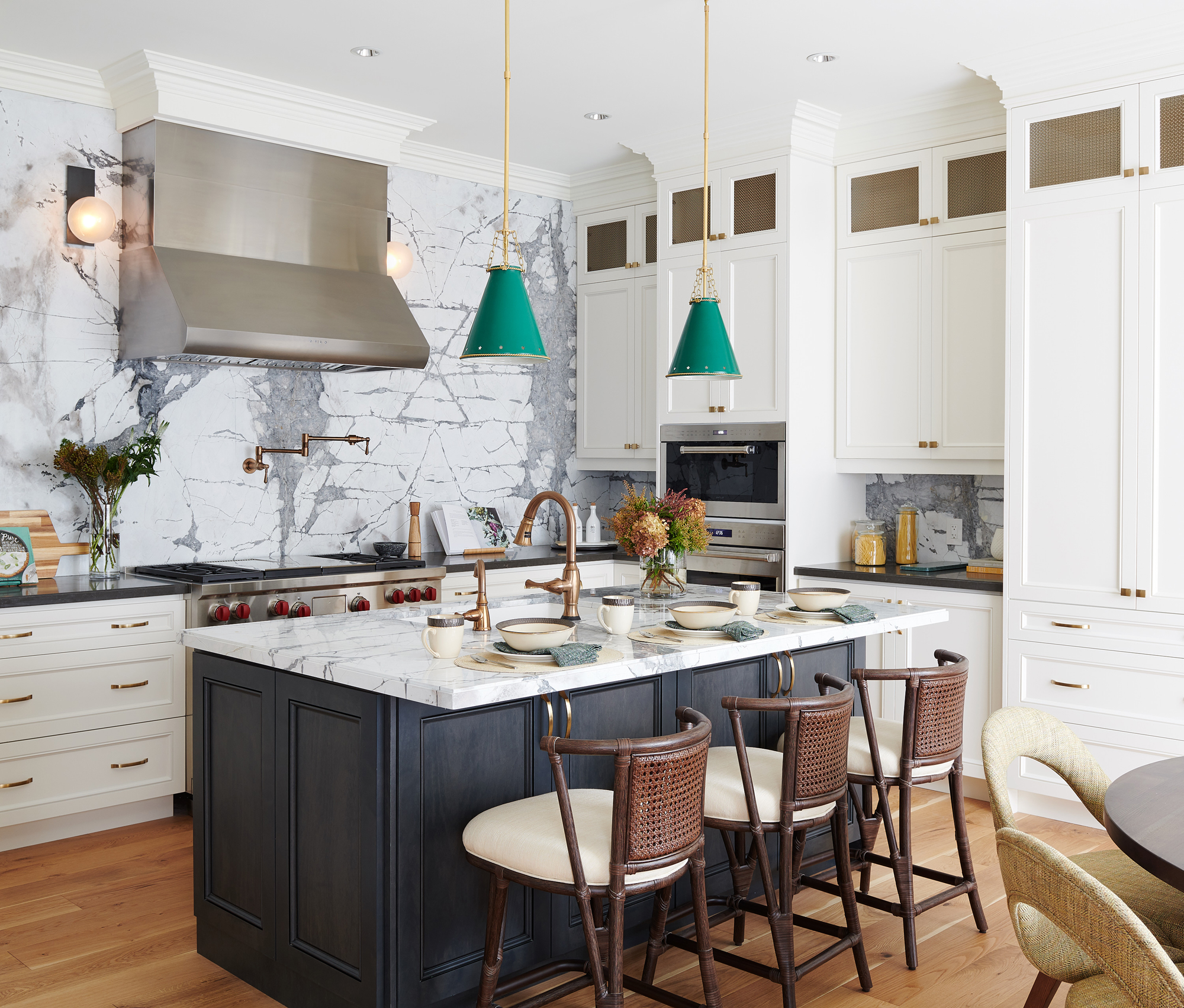
A finish as dramatic and striking as this one is not equally suited to all design aesthetics, while it can offer an elegant and luxurious feel, this can easily look out of place when paired with contrasting finishes.
"Bookmatching is ideal for creating a contemporary, luxurious aesthetic," says Felix. "It adds drama to a more neutral kitchen by highlighting the intricate details of the stone, bringing depth and visual weight."
Choosing relaxing kitchen colors that complement the natural tones of the stone to decorate the rest of your kitchen can help to create this level of depth.
"It’s particularly effective in minimal, modern kitchens, where the clean lines and simplicity allow the bookmatched material to take centre stage and become the focal point of the space," Felix continues. "Overall, the precise, refined look it offers is best suited to high-spec, bespoke kitchens, where the same level of attention to detail and craftsmanship is evident throughout the entire room."
With such a dramatic look, it can be useful to think of bookmarking as the standout feature in your kitchen, letting other elements support the design, as opposed to battling it for attention.
"Let the bookmatching lead your style," says Ella. "Work with the natural shades within the slabs picking this out throughout your interior.
"Bookmatching offers a sophisticated elegance and is best suited to interiors where an elevated, organic, and unique aesthetic is desired. Use it in highly visible areas where it will be appreciated and transition through the years," she continues.
When Should You Not Use Bookmatching?
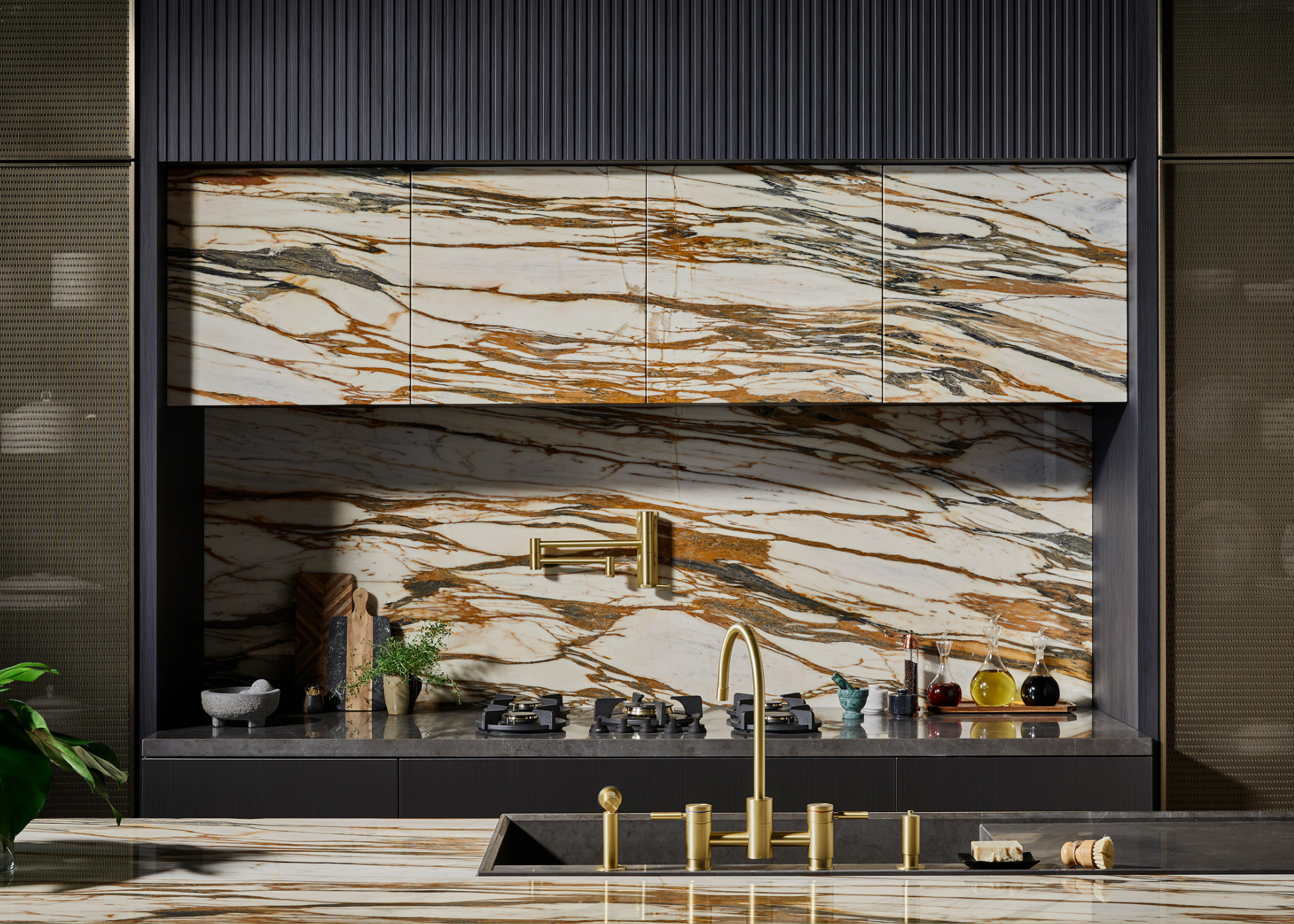
So, are there any place where bookmarking should be absolutely avoided? Well, yes, according to our experts.
"Bookmatching is a striking way to make a design statement and works best in spaces that are large enough to fully appreciate its bold, symmetrical patterns. It may not have the same impact in narrow or galley-style kitchens, where the visual space is limited," explains Felix. "Additionally, if your kitchen already features a lot of decorative elements or patterns, the bookmatched design might feel out of place or be rather overlooked."
The most important factor to consider is the amount of space you have available. This look simply cannot reach its fullest potential when squashed, or cramped in to small spaces, making it an issue if you're on the search for small kitchen ideas.
Now you know all about this stunning finish, perhaps it's time to do some research in to your material of choice. If marble is out of the budget, there are plenty of marble alternatives to use instead, or why not experiment with more unusual kitchen materials?







